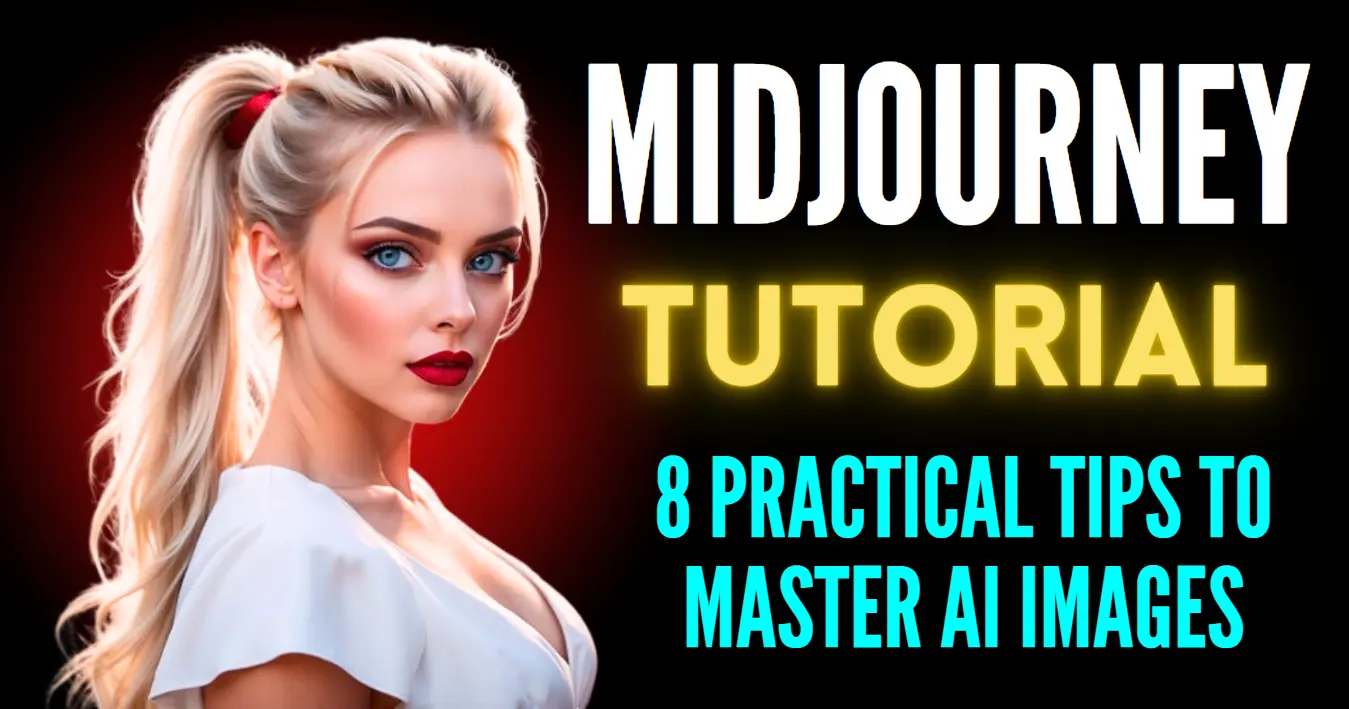As a frequent user of MidJourney, I often encounter questions from the community about generating specific types of images or solving common issues. Today, I’m excited to share practical tips to help you master AI-generated images on MidJourney, answering some of the toughest questions you’ve had.
1. Generating Average-Looking Faces
One common question I receive is how to generate images of normal, everyday people rather than supermodels. MidJourney tends to produce images that look overly Photoshopped.
Here’s a step-by-step guide to create more average-looking faces:
- Basic Prompt: Start with a simple prompt like “portrait photo of an average American young woman, everyday life.”
- Add Context: Since everyday photos are often found on social media, add “Facebook” to the prompt.
- Negative Prompting: Use the –no parameter to exclude unwanted features. For example:
portrait photo of an average American young woman, everyday life, Facebook --no model, makeup, photoshop, perfect- Raw Mode: Use Raw Mode to reduce MidJourney’s creative alterations.
By following these steps, you can generate images that appear more natural and less stylized.
2. Fixing Distorted Faces in Group Photos
MidJourney sometimes distorts faces, noses, or hands, especially in images with multiple characters.
Here’s how to address this:
- Face Size Matters: The smaller the face relative to the image, the more likely it is to be distorted. This is evident in group photos.
- Creative Upscale: Use the Creative Upscale feature, which enhances image quality and often fixes distorted faces.
- Example: Before upscaling, a hiker’s face might look warped. After upscaling, the faces appear much more human-like.
- Side-by-Side Comparison: Use Creative Upscale and compare the results to see significant improvements.
3. Creating T-Shirt Mockups
For those needing a prompt for a t-shirt mockup photoshoot, here’s a method to get the best results:
Explore Homepage: Visit the MidJourney website and explore the homepage for inspiration.
Prompt Search: Use the prompt search bar to look for “shirt mockup.” You’ll find various examples.
Edit Prompt: Hover over an image you like and use the edit prompt feature to copy it.
Generate Mockups: Paste the prompt in the prompt message bar and navigate to the create tab to view the generated t-shirt mockups.
4. Creating Consistent Style Product Lines
To create a complete product line with style consistency, follow these steps:
- Collect Reference Images: Gather images that match the desired vibe (e.g., rustic, old-school) from sites like Pexels.
- Upload Images: Upload these reference photos to MidJourney.
- Use Style Reference: Use the paperclip icon for style reference when attaching images to your prompt.
- Generate Products: For instance, prompt for “product photography, a bar of white soap, there’s a minimalistic rustic background.” The generated products will have a consistent style inspired by your references.
5. Generating Unique Tribe Images
To create images of unique tribes with distinct cultural features, use creative prompts:
- Detailed Descriptions: Start with a detailed prompt like “full body shot of a tribe of European people with blonde hair and light blue stripes of paint on their faces.”
- Add Unique Features: Enhance the prompt with unique elements, such as “yellow pupils” and “giant blue and yellow feathers.”
- Customize Clothing: Specify unique clothing, such as “clothing made out of bones.”
6. Using the /Describe Command
For those interested in recreating specific styles like AI Historian or Stellar Sagas, the /describe command is incredibly useful:
Upload Reference Image: Use the /describe command in MidJourney’s direct message and upload your reference image.
Generate Prompts: MidJourney provides four prompts that describe your image. Run these prompts to see which one best matches your needs.
Combine with Style Reference: Enhance the prompt further by using the –sref command to include a style reference.
7. Generating PowerPoint Backgrounds
For creating PowerPoint background images, the choice of camera type, film stock, and lens depends on your presentation style:
- Stock Photo: Use the keyword “stock photo” for generic images.
- Clipart: For fun, cartoon illustrations, add “clipart” to your prompt.
- Vector Illustration: Use “vector illustration” and add “minimalistic” for clean, simple designs.
8. Arranging Multiple Subjects in a Scene
Arranging multiple subjects in specific positions can be challenging.
Here’s a method to achieve this:
- Generate Base Image: Start by generating a base image, like a building with a balcony.
- Vary Region Tool: Use the Vary Region tool to select specific areas where you want to place subjects.
- Fine-Tune Positions: Continue adjusting until the subjects are positioned as desired.
By using these practical tips, you can effectively navigate common challenges and enhance your MidJourney image generation process. Whether you’re creating realistic portraits, fixing distortions, or developing consistent product lines, these strategies will help you achieve your desired outcomes with ease.
Demi Franco, a BTech in AI from CQUniversity, is a passionate writer focused on AI. She crafts insightful articles and blog posts that make complex AI topics accessible and engaging.
